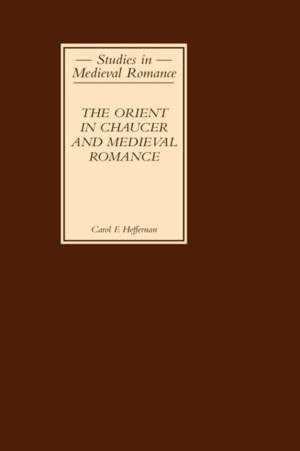
Je cadeautjes zeker op tijd in huis hebben voor de feestdagen? Kom langs in onze winkels en vind het perfecte geschenk!
- Afhalen na 1 uur in een winkel met voorraad
- Gratis thuislevering in België vanaf € 30
- Ruim aanbod met 7 miljoen producten
Je cadeautjes zeker op tijd in huis hebben voor de feestdagen? Kom langs in onze winkels en vind het perfecte geschenk!
- Afhalen na 1 uur in een winkel met voorraad
- Gratis thuislevering in België vanaf € 30
- Ruim aanbod met 7 miljoen producten
Zoeken
Omschrijving
The idea of the Orient is a major motif in Chaucer and medieval romance, and this new study reveals much about its use and significance, setting the literature in its historical context and thereby offering fresh new readings of a number of texts. The author begins by looking at Chaucer's and Gower's treatment of the legend of Constance, as told by the Man of Law, demonstrating that Chaucer's addition of a pattern of mercantile details highlights the commercial context of the eastern Mediterranean in which the heroine is placed; she goes on to show how Chaucer's portraits of Cleopatra and Dido from the Legend of Good Women, read against parallel texts, especially in Boccaccio, reveal them to be loci of medieval orientalism. She then examines Chaucer's inventive handling of details taken from Eastern sources and analogues in the Squire's Tale, showing how he shapes them into the western form of interlace. The author concludes by looking at two romances, Floris and Blauncheflur and Le Bone Florence of Rome; she argues that elements in Floris of sibling incest are legitimised into a quest for the beloved, and demonstrates that Le Bone Florence be related to analogous oriental tales about heroic women who remain steadfast in virtue against persecution and adversity. Professor CAROL F. HEFFERNAN teaches in the Department of English, Rutgers University.
Specificaties
Betrokkenen
- Auteur(s):
- Uitgeverij:
Inhoud
- Aantal bladzijden:
- 170
- Taal:
- Engels
- Reeks:
- Reeksnummer:
- nr. 1
Eigenschappen
- Productcode (EAN):
- 9780859917957
- Verschijningsdatum:
- 6/11/2003
- Uitvoering:
- Hardcover
- Formaat:
- Genaaid
- Afmetingen:
- 162 mm x 249 mm
- Gewicht:
- 508 g

Alleen bij Standaard Boekhandel
+ 354 punten op je klantenkaart van Standaard Boekhandel
Beoordelingen
We publiceren alleen reviews die voldoen aan de voorwaarden voor reviews. Bekijk onze voorwaarden voor reviews.









